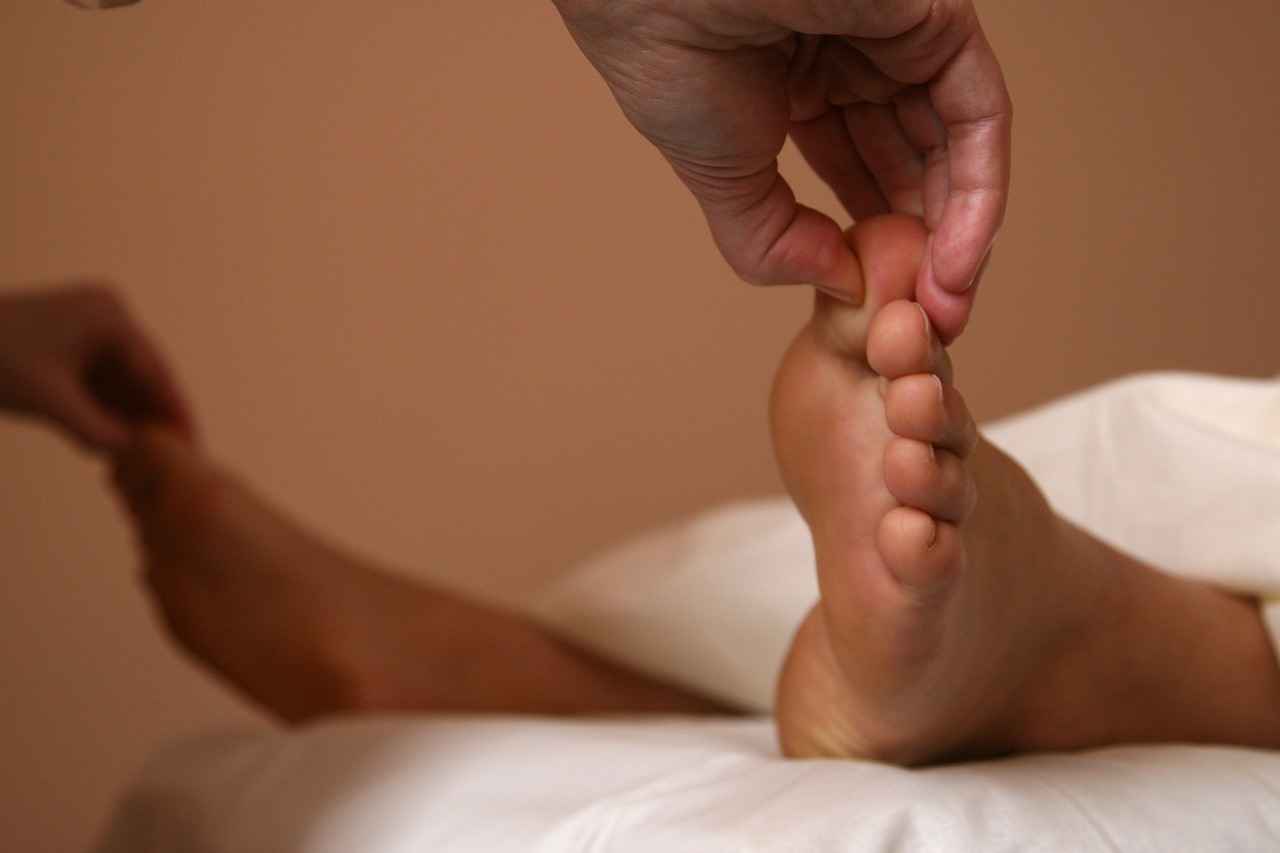This article explores the unique benefits of Asian massage techniques compared to Western methods, highlighting their origins, techniques, and health benefits to help you make an informed choice.
Understanding Asian Massage Techniques
Asian massage encompasses a variety of methods, each deeply rooted in traditional practices that have evolved over centuries. Among the most notable techniques are Shiatsu, Thai, and Tui Na. These practices not only focus on physical manipulation but also emphasize the balance of energy within the body, making them holistic approaches to wellness.
Benefits of Asian Massage for Physical Health
Asian massage techniques are renowned for their numerous physical health benefits. These methods can effectively alleviate pain, improve circulation, and enhance flexibility. For instance, many individuals find relief from chronic conditions such as back pain and migraines through regular sessions of Asian massage.
- Shiatsu: This Japanese technique employs finger pressure to stimulate healing through energy meridians.
- Thai Massage: Known for its dynamic stretches and acupressure, it promotes energy flow and flexibility.
- Tui Na: A traditional Chinese method that combines massage and acupressure, targeting specific ailments.
Comparing Western Massage Techniques
In contrast, Western massage primarily focuses on relaxation and the relief of muscle tension. Popular methods such as Swedish and Deep Tissue massage emphasize these aspects but may lack the holistic approach found in Asian techniques. While Swedish massage is gentle and soothing, deep tissue massage targets deeper muscle layers but often does not consider the energy flow that Asian methods prioritize.
Holistic Benefits of Asian Massage
Beyond the physical realm, Asian massage offers significant emotional and spiritual benefits. These practices encourage mental clarity, emotional balance, and overall well-being. Engaging in Asian massage can lead to improved mindfulness and cognitive function, as relaxation techniques promote a clearer state of mind.
Energy Flow and Balance
Central to many Asian massage techniques is the concept of Qi (or Chi), which refers to the vital energy that flows through the body. By facilitating this energy flow, practitioners can help restore balance and promote healing on multiple levels.
Mental Clarity and Focus
Experiencing Asian massage can significantly enhance mental clarity. The relaxation techniques used in these practices not only relieve physical tension but also allow the mind to reset, leading to improved focus and cognitive performance.

Understanding Asian Massage Techniques
Asian massage is a rich tapestry of techniques that have been cultivated over centuries, each with its own unique philosophy and method. These practices are deeply rooted in traditional healing arts, emphasizing the connection between the body, mind, and spirit. In this section, we will explore some of the most renowned techniques, including Shiatsu, Thai, and Tui Na, along with their historical significance and distinctive approaches.
- Shiatsu: Originating from Japan, Shiatsu translates to “finger pressure.” This technique employs rhythmic pressure on specific points along the body’s energy pathways, or meridians. Historically, Shiatsu was influenced by both traditional Chinese medicine and Western anatomy, resulting in a holistic approach to health. It not only addresses physical ailments but also promotes emotional well-being through its calming effects.
- Thai Massage: This dynamic practice is a fusion of yoga-like stretching and acupressure. Thai massage is believed to have been influenced by Indian Ayurvedic practices and has been performed for over 2,500 years. The therapist uses their hands, feet, and body weight to guide the recipient through a series of stretches, enhancing flexibility and energy flow. This method is not just about relaxation; it aims to invigorate and rejuvenate the body.
- Tui Na: Tui Na is a traditional Chinese therapeutic massage technique that dates back over 2,000 years. It involves various hand techniques to stimulate the flow of Qi (vital energy) and blood throughout the body. Tui Na is often used in conjunction with acupuncture and herbal medicine, reflecting its holistic approach to healing. It is particularly effective for treating musculoskeletal issues and promoting overall health.
Each of these techniques is steeped in history and cultural significance, offering unique benefits that cater to different needs. By understanding these methods, individuals can make informed choices about which type of massage resonates most with their personal wellness journey.

Benefits of Asian Massage for Physical Health
Asian massage techniques have been revered for centuries, not only for their relaxing properties but also for their profound physical health benefits. These methods, deeply rooted in traditional practices, are designed to address various physical ailments and enhance overall well-being.
One of the primary advantages of Asian massage is its ability to alleviate pain. Techniques such as Shiatsu and Tui Na focus on applying pressure to specific points in the body, which can effectively relieve tension and reduce discomfort. By stimulating these pressure points, the body’s natural healing processes are activated, leading to a significant reduction in chronic pain conditions.
In addition to pain relief, Asian massage is known for its ability to improve circulation. The rhythmic movements and pressure applied during these sessions promote blood flow, ensuring that oxygen and nutrients are efficiently delivered to various parts of the body. This enhanced circulation not only aids in recovery from injuries but also boosts overall energy levels, contributing to a sense of vitality and well-being.
Another notable benefit is the enhancement of flexibility. Techniques found in Thai massage, which incorporate stretching and acupressure, help to loosen tight muscles and increase range of motion. This is particularly beneficial for athletes or individuals with sedentary lifestyles, as improved flexibility can prevent injuries and enhance physical performance.
- Alleviates Pain: Reduces discomfort through targeted pressure.
- Improves Circulation: Enhances blood flow and nutrient delivery.
- Enhances Flexibility: Increases range of motion and prevents injuries.
Overall, Asian massage techniques offer a holistic approach to health, addressing both physical ailments and promoting a state of relaxation and balance. By incorporating these methods into a regular wellness routine, individuals can experience substantial improvements in their physical health and quality of life.
Shiatsu: The Art of Finger Pressure
Shiatsu is an ancient Japanese therapy that employs finger pressure to stimulate specific points on the body, promoting healing and balance. Rooted in traditional Chinese medicine, Shiatsu operates on the principle that energy, or Qi, flows through meridians in the body. By applying pressure to these points, Shiatsu practitioners aim to restore harmony and alleviate various health issues.
This technique not only focuses on physical ailments but also addresses emotional and mental well-being. The practice of Shiatsu encourages relaxation, which can significantly reduce stress levels. Many individuals find that regular sessions help them manage anxiety and improve their overall mood.
One of the key aspects of Shiatsu is its emphasis on meridian stimulation. Each meridian corresponds to specific organs and emotional states. For instance, stimulating the liver meridian can help detoxify the body and enhance mood, while working on the heart meridian may alleviate feelings of anxiety. This targeted approach allows Shiatsu to address a wide range of health concerns, including:
- Chronic Pain: Shiatsu can relieve tension and pain in muscles and joints.
- Digestive Issues: By influencing the digestive meridians, Shiatsu may help with conditions like bloating and constipation.
- Insomnia: The relaxation induced by Shiatsu can promote better sleep quality.
- Stress and Anxiety: Regular sessions can lead to significant improvements in mental health.
Shiatsu practitioners often tailor their sessions to the individual needs of their clients, making it a versatile and personalized form of therapy. By focusing on both the physical and energetic aspects of health, Shiatsu stands out as a holistic approach that can complement other medical treatments. As more people seek natural and effective ways to enhance their well-being, Shiatsu continues to gain recognition as a valuable method for achieving health and balance.
How Shiatsu Works
Simplifying the understanding of Shiatsu can significantly enhance our appreciation for its therapeutic benefits. Shiatsu, which translates to “finger pressure” in Japanese, is a holistic approach that integrates the principles of traditional Chinese medicine with modern therapeutic techniques. This method emphasizes the importance of energy balance in the body, known as Qi, which flows through specific pathways called meridians.
At its core, Shiatsu aims to restore harmony within the body by applying pressure to these meridians using the fingers, palms, and sometimes elbows. This targeted pressure stimulates the body’s natural healing processes, promoting relaxation and reducing physical tension. The practice is based on the belief that when energy flow is disrupted, it can lead to both physical and emotional ailments.
One of the key aspects of Shiatsu is its focus on preventative care. Regular sessions can help maintain energy balance, thereby reducing the risk of illness and enhancing overall well-being. This proactive approach distinguishes Shiatsu from many Western massage techniques, which often prioritize relief from existing discomfort rather than fostering long-term health.
Furthermore, Shiatsu is not just a physical treatment; it incorporates elements of mindfulness and awareness. Practitioners often encourage clients to engage in deep breathing and mental relaxation during sessions, which can lead to profound emotional release and clarity. This dual focus on the body and mind makes Shiatsu a unique and effective method for managing stress and anxiety.
In summary, understanding how Shiatsu works provides insight into its effectiveness as a healing modality. By balancing energy, relieving tension, and promoting holistic wellness, Shiatsu offers a comprehensive approach to health that aligns physical, emotional, and spiritual well-being.
Shiatsu for Stress Relief
Spa treatments and holistic therapies have gained immense popularity in recent years, with many individuals seeking effective methods for stress management. Among these, Shiatsu, a traditional Japanese massage technique, stands out as an exceptional practice for alleviating stress and promoting relaxation.
Shiatsu employs targeted pressure on specific points of the body, known as acupressure points, which correspond to the body’s meridian system. This technique not only helps in reducing anxiety but also fosters a deep sense of calm and tranquility. By applying pressure to these points, Shiatsu encourages the flow of Qi (energy), which can become stagnant due to stress and tension.
One of the key benefits of Shiatsu is its ability to activate the body’s natural relaxation response. This is achieved through a combination of rhythmic pressure and stretching, which helps to release built-up tension in the muscles. As a result, individuals often report feeling lighter and more relaxed after a session. Furthermore, Shiatsu can enhance blood circulation, which aids in delivering oxygen and nutrients to tissues while removing toxins, contributing to an overall sense of well-being.
In addition to physical relaxation, Shiatsu also addresses emotional stress. The practice encourages mindfulness and self-awareness, allowing individuals to connect with their bodies and emotions. This connection is essential for recognizing stress triggers and developing healthier coping mechanisms.
Many practitioners recommend regular Shiatsu sessions as a proactive approach to managing stress. By incorporating this ancient technique into your wellness routine, you can not only combat daily stressors but also cultivate a deeper sense of peace and balance in your life.
- Reduces anxiety: Targeted pressure alleviates mental tension.
- Promotes relaxation: Enhances the body’s natural calming response.
- Improves circulation: Aids in detoxifying the body and enhancing overall health.
- Encourages mindfulness: Helps individuals connect with their emotions and stressors.
In summary, Shiatsu serves as a powerful tool for stress relief, combining physical and emotional benefits that contribute to a more balanced and harmonious life.
Thai Massage: A Dynamic Approach
Thai massage is a unique form of bodywork that intricately blends stretching and acupressure techniques, offering a holistic approach to physical wellness. This dynamic practice not only enhances flexibility but also promotes a harmonious flow of energy throughout the body, making it a favored choice for many seeking both relaxation and revitalization.
Originating from ancient traditions, Thai massage is often described as a form of passive yoga. The therapist guides the recipient through a series of stretches and postures, which helps to open up the body’s energy channels, known as Sen lines. By applying pressure to specific points along these lines, the therapist stimulates the flow of Qi (or life force), promoting a sense of balance and well-being.
- Enhancing Flexibility: The stretching techniques used in Thai massage can significantly improve flexibility. By gently manipulating the body into various positions, the therapist helps to elongate muscles and increase the range of motion in joints.
- Promoting Energy Flow: The acupressure component of Thai massage targets specific pressure points, which can release blockages and enhance the flow of energy. This not only revitalizes the body but also helps to alleviate symptoms of stress and fatigue.
- Physical and Mental Benefits: Regular Thai massage sessions can lead to improved posture, reduced muscle tension, and enhanced mental clarity. The combination of physical movement and mindful breathing techniques fosters a deep state of relaxation.
In addition to its physical benefits, Thai massage also emphasizes the importance of mind-body connection. Practitioners often report feeling a greater sense of awareness and tranquility following a session, which can lead to improved emotional health.
Overall, Thai massage offers a comprehensive approach to wellness, making it an excellent choice for those looking to enhance their physical flexibility and promote a balanced flow of energy throughout their bodies.

Comparing Western Massage Techniques
When it comes to massage therapy, Western methods are often recognized for their focus on relaxation and muscle tension relief. This section provides a comprehensive comparison of popular Western massage techniques, such as Swedish and deep tissue massage, against their Asian counterparts, highlighting their distinctive characteristics and benefits.
Swedish massage is perhaps the most well-known Western technique, celebrated for its gentle and flowing strokes. This method primarily aims to promote relaxation and improve circulation through a series of long strokes, kneading, and circular movements. While it is effective for relieving stress, it may not address deeper muscle issues as thoroughly as some Asian techniques.
In contrast, deep tissue massage focuses on the deeper layers of muscle and connective tissue. This technique employs firm pressure and slow strokes to alleviate chronic pain and tension. It is particularly beneficial for individuals suffering from sports injuries or chronic pain conditions. However, it can sometimes be intense and may not provide the same level of relaxation as Swedish massage.
Asian massage techniques, such as Shiatsu and Thai massage, take a more holistic approach to wellness. These methods not only relieve muscle tension but also aim to balance the body’s energy, known as Qi in Chinese medicine. By focusing on energy flow and meridian points, Asian massages address both physical and emotional health, providing a comprehensive healing experience.
Many individuals find that integrating both Western and Asian massage techniques can yield the best results. For instance, starting with a relaxing Swedish massage can prepare the body for deeper work, such as deep tissue therapy or Shiatsu, enhancing overall effectiveness. This combination allows for a more tailored approach to personal wellness, addressing specific needs and preferences.
In summary, while Western massage techniques excel in promoting relaxation and relieving muscle tension, Asian methods offer a broader scope of benefits, including energy balance and holistic healing. Understanding these differences can help individuals make informed choices about their massage therapy options.
Swedish Massage: The Classic Approach
Swedish massage is widely recognized as one of the most popular forms of massage therapy in the Western world. This technique is characterized by its gentle and rhythmic strokes, which are primarily aimed at promoting relaxation and relieving muscle tension. Unlike the more vigorous and intense methods found in many Asian massage practices, Swedish massage focuses on a holistic approach that nurtures both the body and mind.
The fundamental techniques of Swedish massage include effleurage (long, gliding strokes), petrissage (kneading), friction (rubbing), tapotement (tapping), and vibration. Each technique serves a specific purpose, from enhancing circulation to easing muscle knots. This careful combination of movements not only helps to relax the muscles but also stimulates the nervous system, promoting a sense of well-being.
One of the key distinctions between Swedish and Asian massage is the intensity of the techniques used. While Swedish massage is gentle and soothing, Asian methods such as Shiatsu or Thai massage often incorporate deeper pressure and stretching techniques. These Asian practices are designed to promote energy flow and address specific health concerns, making them more vigorous in nature.
Furthermore, Swedish massage often emphasizes the importance of a serene environment to enhance the relaxation experience. Soft music, dim lighting, and the use of aromatherapy oils are common elements that contribute to a tranquil atmosphere, allowing clients to unwind fully. In contrast, Asian massages may focus more on the manipulation of energy pathways, sometimes involving a more dynamic interaction between the therapist and the client.
In summary, while both Swedish and Asian massage techniques offer unique benefits, they cater to different needs and preferences. Those seeking a gentle, relaxing experience may find Swedish massage to be the ideal choice, while individuals looking for a more invigorating and therapeutic approach might prefer the techniques found in Asian practices.
Deep Tissue Massage: Targeting Chronic Pain
Deep tissue massage is a specialized form of bodywork that targets the deeper layers of muscle and connective tissue. It is particularly effective in addressing chronic pain issues that many individuals face today. This technique employs slow, deliberate strokes and deep finger pressure to alleviate tension and pain in specific muscle groups.
One of the key advantages of deep tissue massage is its ability to relieve chronic pain conditions, such as lower back pain, arthritis, and sports injuries. By focusing on the deeper muscle layers, this massage technique helps to break down adhesions and scar tissue, promoting better blood circulation and enhancing overall mobility. The pressure applied during the session can help to release toxins stored in the muscles, leading to a feeling of rejuvenation.
In contrast, many Asian massage techniques take a more holistic approach, emphasizing the balance of energy within the body. For example, practices such as Shiatsu and Thai massage focus not only on physical pain relief but also on improving the flow of Qi (energy) throughout the body. This perspective can be beneficial for those seeking a more comprehensive treatment for chronic pain, as it addresses both the physical and emotional aspects of well-being.
While deep tissue massage is effective for targeting specific areas of pain, Asian techniques may offer additional benefits, such as stress reduction and emotional balance. The integration of stretching and acupressure in these methods can lead to improved flexibility and a greater sense of relaxation.
Ultimately, the choice between deep tissue massage and Asian techniques depends on individual preferences and specific health needs. Both approaches have their unique strengths, and understanding these differences can help individuals make informed decisions about their wellness journeys.

Holistic Benefits of Asian Massage
Asian massage is not only a treatment for physical ailments but also a pathway to emotional and spiritual well-being. As we delve into the holistic benefits of these ancient practices, we uncover their profound impact on mental clarity, emotional balance, and overall wellness.
One of the key aspects of Asian massage is its ability to promote mental clarity. Techniques such as Shiatsu and Thai massage focus on releasing tension and blockages within the body, which can cloud the mind. By enhancing blood circulation and stimulating energy flow, these practices allow individuals to achieve a state of mindfulness and heightened awareness. This mental clarity is essential for making informed decisions and enhancing productivity in daily life.
Moreover, Asian massage plays a significant role in fostering emotional balance. The gentle yet firm pressure applied during these sessions helps to release pent-up emotions and stress. This release can lead to a more stable emotional state, allowing individuals to cope better with life’s challenges. The holistic approach of Asian massage encourages a deep connection between the body and mind, promoting a sense of inner peace and harmony.
Additionally, the spiritual benefits of Asian massage cannot be overlooked. Many practitioners believe that these techniques help to align the body’s energy, or Qi, facilitating a deeper connection to oneself and the universe. This alignment can lead to a greater sense of purpose and fulfillment in life. Engaging in regular massage practices can serve as a form of meditation, allowing individuals to reflect and connect with their inner selves.
In summary, the holistic benefits of Asian massage extend far beyond physical health. By promoting mental clarity, emotional balance, and spiritual well-being, these practices offer a comprehensive approach to overall wellness, making them a valuable addition to any self-care routine.
Energy Flow and Balance
Energy flow is a fundamental concept in many Asian massage practices, deeply rooted in traditional philosophies that emphasize the interconnectedness of the body and mind. Central to this idea is the concept of Qi (or Chi), which is often described as the vital life force that flows through the body. Understanding how Qi operates can provide valuable insights into both physical and emotional health.
In Asian cultures, it is believed that when Qi flows freely, the body experiences harmony and balance. Conversely, blockages or disruptions in this energy flow can lead to physical ailments and emotional disturbances. Techniques such as Shiatsu, Thai massage, and Tui Na are designed specifically to restore this balance by targeting specific pressure points and meridians throughout the body.
| Technique | Focus | Benefits |
|---|---|---|
| Shiatsu | Pressure points | Relieves tension, enhances energy flow |
| Thai Massage | Stretching | Improves flexibility, promotes relaxation |
| Tui Na | Massage and acupressure | Alleviates pain, restores balance |
Moreover, the practice of Asian massage not only addresses physical issues but also plays a crucial role in emotional well-being. As practitioners work to unblock Qi, they also help clients release stored emotions, leading to a sense of calm and mental clarity. This holistic approach is particularly beneficial in today’s fast-paced world, where stress and anxiety are prevalent.
- Improved Emotional Health: Regular sessions can lead to a decrease in anxiety and depression.
- Enhanced Mindfulness: The focus on breath and body awareness promotes a deeper connection to oneself.
- Overall Wellness: A balanced flow of Qi contributes to a more resilient and healthy body.
In conclusion, understanding the significance of energy flow and balance is essential for appreciating the full benefits of Asian massage techniques. By fostering this awareness, individuals can not only improve their physical health but also cultivate a deeper emotional and spiritual connection.
Mental Clarity and Focus
Engaging in Asian massage techniques offers profound benefits for mental clarity and focus. These practices are not merely physical therapies; they are holistic approaches that enhance overall well-being. By integrating elements of mindfulness and relaxation, Asian massage can significantly improve cognitive function.
One of the primary ways Asian massage promotes mental clarity is through the activation of the body’s energy pathways. Techniques such as Shiatsu and Tui Na stimulate pressure points that correspond to various organs and systems within the body. This stimulation helps to release tension and stress, which are often barriers to clear thinking and focus. When the body is relaxed, the mind can also achieve a state of calm, allowing for improved concentration and clarity.
Moreover, the rhythmic movements and stretches involved in practices like Thai massage promote a sense of mindfulness. This mindfulness is crucial for enhancing cognitive functions, as it encourages practitioners to be present in the moment. As individuals focus on their breathing and bodily sensations during the massage, they cultivate a heightened awareness that can translate into greater mental acuity in daily life.
Additionally, the deep relaxation achieved through these techniques can lead to improved sleep quality. Quality sleep is essential for cognitive function, memory retention, and overall mental health. By regularly engaging in Asian massage, individuals may find themselves better equipped to handle daily challenges, make decisions, and think creatively.
In summary, the integration of relaxation, mindfulness, and energy flow in Asian massage techniques creates an environment conducive to enhancing mental clarity and focus. This holistic approach not only addresses physical ailments but also nurtures the mind, paving the way for improved cognitive performance and emotional balance.
Frequently Asked Questions
- What are the main differences between Asian and Western massage techniques?
Asian massage techniques, like Shiatsu and Thai, focus on holistic healing, energy flow, and stretching, while Western methods, such as Swedish and deep tissue, primarily target muscle tension and relaxation.
- How does Shiatsu specifically help with stress relief?
Shiatsu uses targeted finger pressure on specific points to release tension and promote relaxation, making it effective in reducing anxiety and enhancing overall mental well-being.
- Can Thai massage improve flexibility?
Absolutely! Thai massage incorporates stretching techniques that help increase flexibility and range of motion, making it a dynamic choice for those looking to enhance their physical capabilities.
- Are there any emotional benefits to Asian massage?
Yes! Asian massage not only addresses physical ailments but also promotes mental clarity and emotional balance, helping you feel more centered and focused.
- Is Asian massage suitable for everyone?
While most people can benefit from Asian massage, it’s always best to consult with a healthcare professional, especially if you have specific health concerns or conditions.












